Story at a glance:
- The EPA’s Indoor AirPlus Program is a voluntary partnership and labeling initiative designed to aid home builders in improving indoor air quality.
- Indoor AirPlus qualified homes include measures that address moisture control, radon control, pest prevention, HVAC systems, pollutant control, and low-emitting building materials.
- The benefits of living in an Indoor AirPlus home or apartment include improved indoor air quality, minimal pollutant exposure, greater energy efficiency, and increased comfort.
Considering the average American spends 90% of their time inside, indoor air quality has just as much—if not more—of an impact on public health as outdoor air quality.
This has led to a greater emphasis being placed on improving indoor air quality in the built environment, particularly in commercial, educational, and health care buildings. One real estate sector that has largely lagged behind on this trend, however, is the residential sector.
That’s why initiatives like the EPA’s Indoor AirPlus program—designed specifically for residential projects—exist. In this article we cover everything you need to know about the EPA’s Indoor AirPlus program.
What is the EPA’s Indoor AirPlus Program?
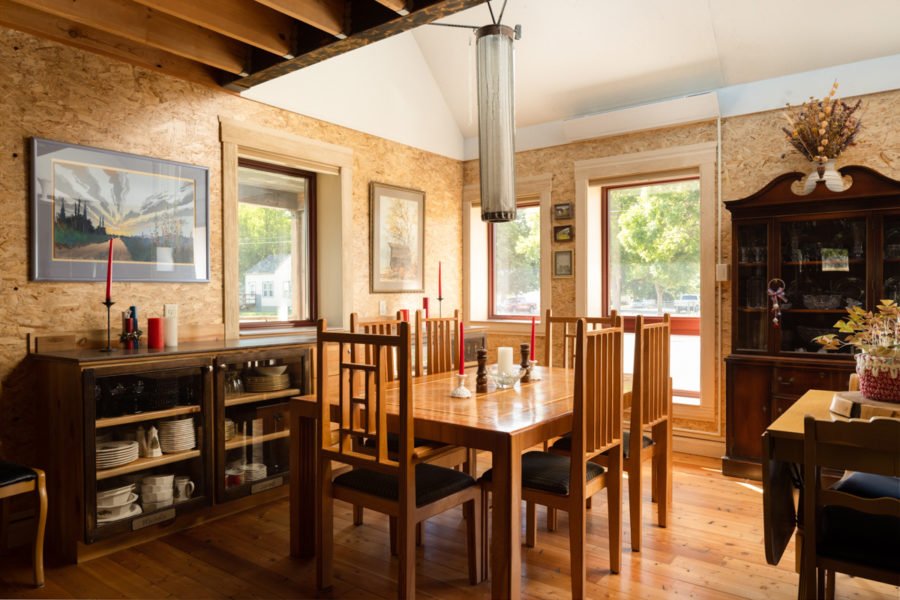
The EPA’s Indoor AirPlus program is designed to help improve indoor air quality in the residential sector. Photo by Nathan Satran
Developed in 2008, the EPA’s Indoor AirPlus initiative—also stylized as Indoor airPLUS—is a voluntary partnership and labeling program designed to help new home builders improve indoor air quality by requiring construction practices and product specifications that work to minimize and reduce exposure to airborne pollutants. The program is intended to help builders meet consumers’ growing preference for homes and multifamily dwellings with improved indoor air quality.
With the introduction of Indoor AirPlus Version 2 in 2024, homes can be constructed to earn either the base level Indoor AirPlus Certified label or the more rigorous Indoor AirPlus Gold label. In order for a home to qualify for Indoor AirPlus Gold designation, it must first be designed to earn the ENERGY STAR Certified Homes label. Once completed all Indoor AirPlus projects must be verified to ensure compliance before they may be labeled with the distinction.
Prospective homebuyers and apartment developers can locate builders committed to providing Indoor AirPlus qualified buildings via the Indoor airPLUS Partner List or by looking for builders with the Indoor airPLUS icon on the ENERGY STAR Partner Locator. Builders wishing to become an Indoor AirPlus Partner can find more information on the process here.
Indoor AirPlus Program Design Features & Considerations
The Indoor AirPlus program works to improve air quality by addressing the following design features and considerations:
Moisture Control
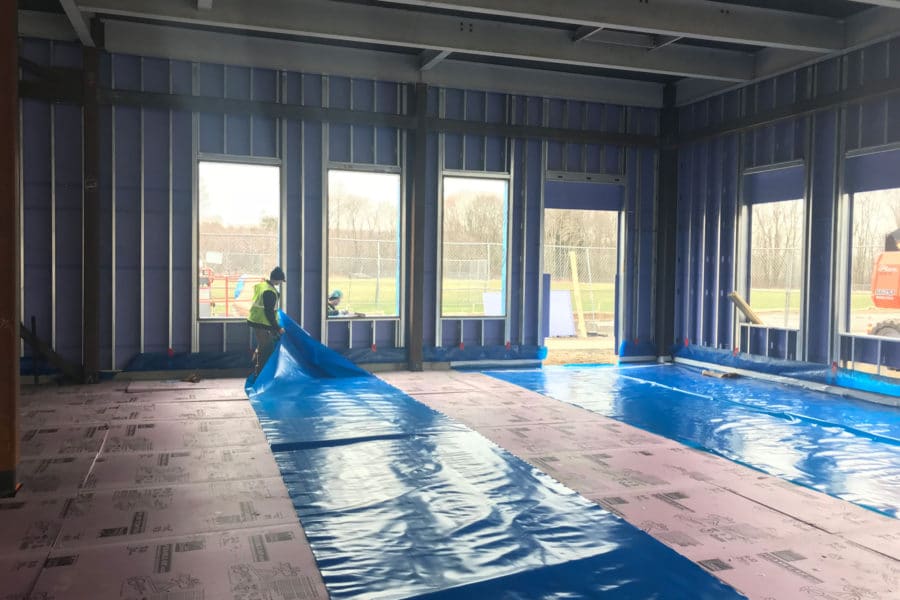
Polystyrene boards are lightweight and water-resistant, and their low water absorption helps to prevent mold. Photo courtesy of ISI Building Products
Excess moisture buildup can negatively impact indoor air quality by providing conditions conducive to mold and mildew growth; as air circulates in a home where mold and mildew are present, spores are distributed throughout and may trigger allergic reactions, exacerbate existing respiratory conditions, or lead to the development of various health issues in the long-term.
Indoor AirPlus homes work to control moisture through a variety of strategies, including the installation of drain tile or a Composite Foundation Drainage System for newly erected foundations, addition of a capillary break and Class A or Class B vapor retarder under new concrete slabs, damp-proofing and waterproofing below-grade exterior walls, fully flashing new windows and doors, and more.
Radon Control
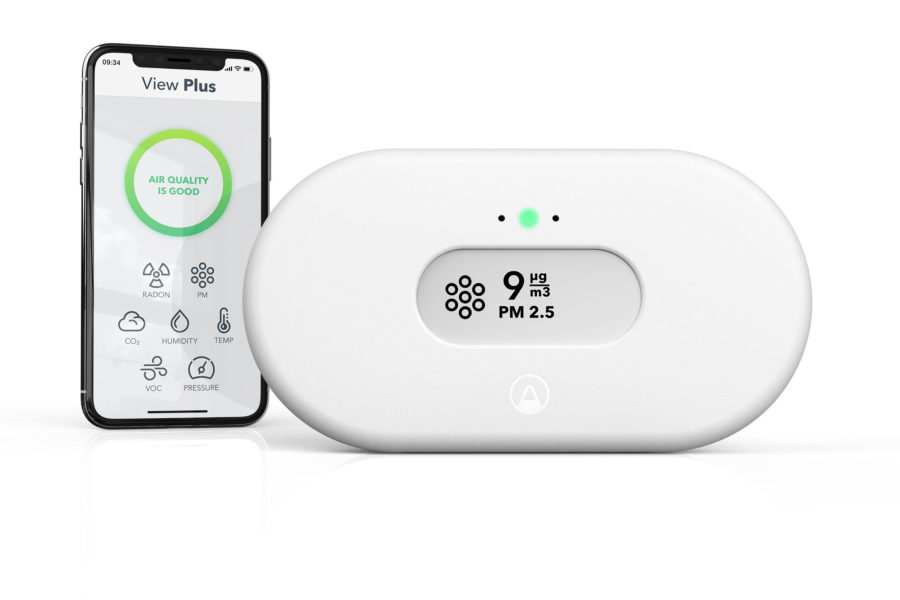
The View Plus air quality monitor includes a built-in display and sensors for radon, particulate matter (PM), carbon dioxide (CO2), humidity, temp, airborne chemicals (VOCs), and air pressure. Photo courtesy of Airthings
Radon can be a serious detriment to respiratory health when present. An odorless, colorless, tasteless radioactive gas, radon is naturally released from the earth and normally dissipates soon after, leaving zero negative impact on an area’s overall air quality.
Radon becomes a problem when enclosed structures are built atop sites where the gas is present, as it can enter buildings through foundations, basement floors, cracks in walls, et cetera and build up until it reaches dangerous levels. Long-term exposure to radon is the second-leading cause of lung cancer in the United States.
The Indoor AirPlus program does not explicitly require that all homes undergo testing for radon, though post-construction testing is a requirement for homes built in locations with an EPA Radon Zone 1 or Radon Zone 2 designation. Homes built in these areas must feature an active radon mitigation system or a passive radon reduction system to meet qualification requirements. The latter can easily accommodate a radon vent fan—the key component in an active system—in the event that future testing confirms the presence of radon at levels at or above 4 pCi/L.
Homes equipped with an active or passive radon mitigation system must also include certain radon-resistant construction features—like a capillary break and vapor retarder—as well. Indoor AirPlus homes built in areas with a Radon Zone 3 designation do not require an active or passive radon mitigation system, but occupants must be given a copy of the EPA’s Basic Radon Facts alongside the standard owner and occupant information kit.
Pest Prevention
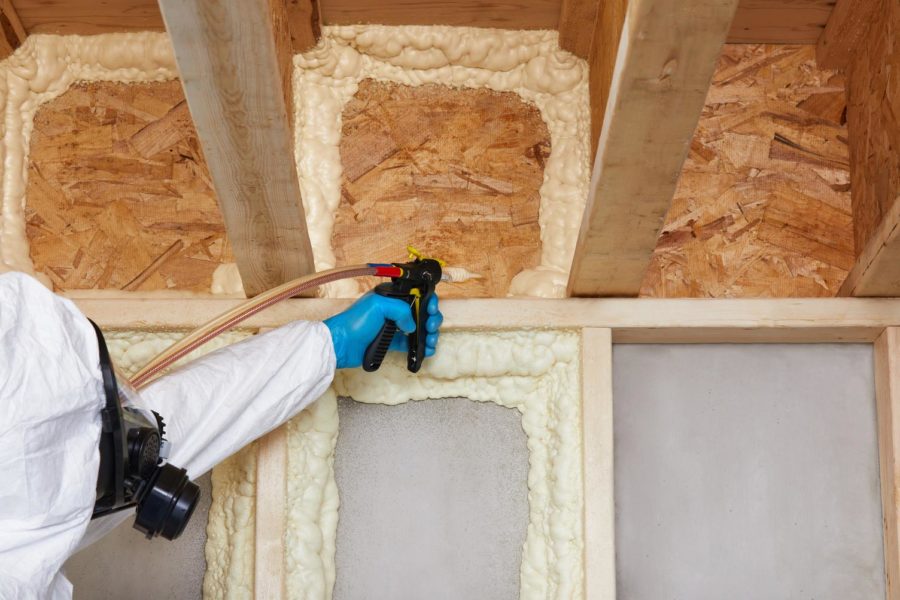
Froth-Pak is an all-in-one kit for contractors to quickly and efficiently seal out moisture, dust, allergens, and pests and improve energy efficiency, building resilience, and comfort. Photo courtesy of DuPont
While pests may not be the first thing people think of when considering factors that affect indoor air quality, rodents and insects can introduce a range of pollutants—including dander, droppings, corpses, and other biological contaminants—into the home.
Many pesticides used to control pest infestations can also release harmful chemicals into the air that may negatively impact human health when inhaled. It is for these reasons that Indoor AirPlus homes seek to prevent pest infestations from happening in the first place by employing effective pest barriers at potential points of entry.
Builders must seal exterior penetrations and joints between the foundation and exterior wall assemblies where accessible; install bird/rodent screens at all architectural openings that cannot be fully sealed; equip ventilation termination fittings with screens, grilles, or louvers whose openings must be between 0.25 and 0.5 inches square; fit dryer ducts with weather-resistant terminations or louvers; and—for homes seeking Indoor AirPlus Gold—provide screens for all operable windows.
HVAC
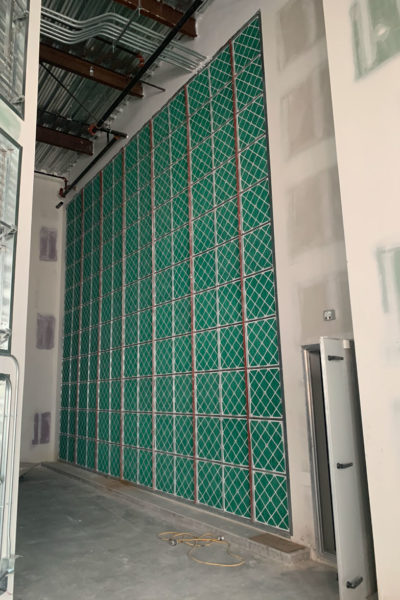
Gensler’s Gail Napell calls the MERV 13 filter one of the “unsung heroes” of wildfire preparedness. “This is how we continue to breathe fresh air,” she says. “We’ve had some wildfires that were literally weeks long here in California. It could be harmful to your lungs.” Photo by Aaron Baumbach
To help prevent pollutants from entering through mechanical ventilation systems, the Indoor AirPlus program requires that central forced-air HVAC systems be equipped with a minimum MERV 8 filter; Indoor AirPlus Gold requires installation of a MERV 13 filter for added protection against smoke, bacteria, and some viruses.
Other measures that Indoor AirPlus homes use to reduce the negative impacts of HVAC on air quality include installation of standard or “balanced” mechanical ventilation systems in each dwelling unit, bathroom exhaust fans that vent directly to the outdoors, demand-controlled mechanical kitchen exhaust fans that vent directly to the outdoors, whole-house and spot ventilation, et cetera.
Managing and mitigating humidity also falls under the purview of certain Indoor AirPlus qualified homes, particularly those located in Moist (A) and Marine (C) climate zones, as defined by 2021 IECC Figure R301.1. Homes in these zones must be served by equipment—such as a dedicated dehumidification system—designed with sufficient latent capacity to maintain indoor relative humidity at or below 60% in each dwelling unit.
Indoor AirPlus Gold homes must also be equipped with a humidity monitoring device in their main dwelling area; the device should include a digital display of both indoor temperature and relative humidity.
Pollutant Control
Controlling the spread and concentration of indoor pollutants are two important qualities of an Indoor AirPlus home. The program’s pollutant control methods includes measures that address:
- Residential combustion. Naturally-drafted furnaces, boilers, and water heaters must pass the maximum depressurization testing per ANSI/BPI 1200-S-2017 Standard or ANSI/ACCA 12 QH-2018 Standard and shall exhaust to the outdoors no less than 2 ft. higher than any obstructions within a 10 ft. radius (for Indoor AirPlus Certified); all combustion appliances must be mechanically drafted or direct-vented (for Indoor AirPlus Gold).
- Carbon monoxide. All dwelling units equipped with fuel-burning appliances/fireplaces and/or an attached garage must have carbon monoxide detection systems installed in accordance with the 2021 IBC Section 915 or the 2021 IRC Section R315.
- Smoking and vaping. Builders must provide occupants with a copy of the EPA’s brochure on Secondhand Tobacco Smoke and the Health of Your Family OR with a link to the EPA’s resources on Secondhand Smoke and Smoke-Free Homes; in multifamily buildings, smoking/vaping must be prohibited in indoor common areas and designated outdoor smoking areas must be located at least 25 feet away from entries, operable windows, and outdoor air intakes.
The Indoor AirPlus program also aims to reduce pollution stemming from outdoor air infiltration by requiring builders to seal all basement/perimeter walls and conduct air-tightness testing in accordance with those procedures outlined in ANSI/RESNET/ICC Standard 380.
Building Materials
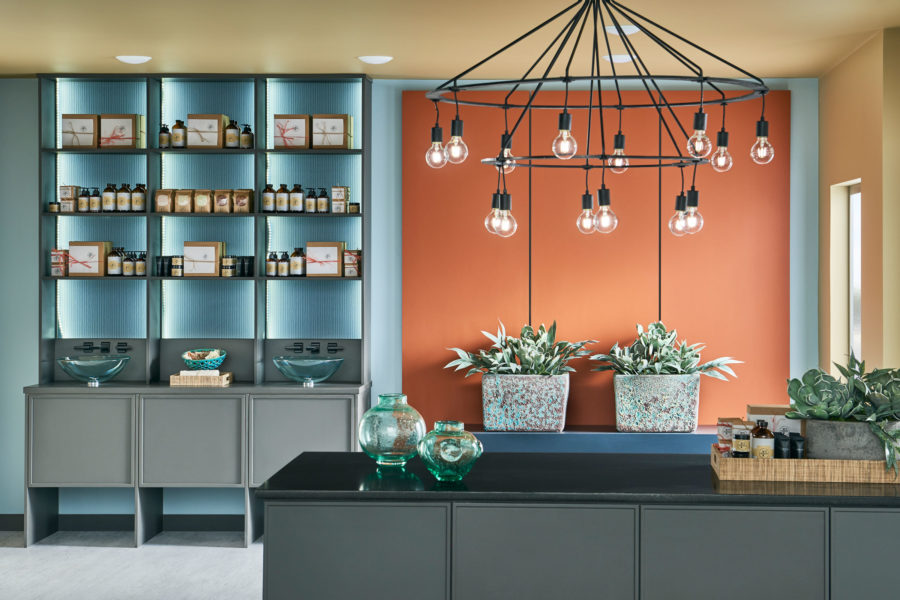
Behr’s Premium Plus paints are GREENGUARD Gold Certified. Photo courtesy of Behr.
Materials can be a major source of indoor air pollutants like volatile organic compounds (VOCs), or compounds whose high vapor pressure and low water solubility allows them to off-gas into the air at room temperatures. Short-term exposure to these compounds can cause eye, nose, and throat irritation, as well as nausea, dizziness, headaches, and difficulty breathing; long-term exposure to VOCs can cause or exacerbate respiratory illnesses, damage the central nervous system, and even cause certain cancers.
To help safeguard occupants, the Indoor AirPlus program requires builders to specify low-emitting products—whose maximum VOC emissions may not exceed those determined by CDPH Standard Method V1.2-2017—when installing new materials. The table below outlines acceptable certifications and labels for various material classes:
| Material Class | Accepted Labels |
| Interior paints, finishes, and coatings | Clean Air GOLD, ClearChem, GREENGUARD GOLD, Indoor Advantage Gold, Indoor Air Comfort USA |
| Carpet and cushions | CRI Green Label Plus, Indoor Advantage Gold, Indoor Air Comfort USA |
| Adhesives and sealants | Clean Air Gold, ClearChem, FloorScore, GREENGUARD GOLD, Indoor Advantage Gold, Indoor Air Comfort USA |
| Hard surface flooring | Benchmark VOC Green Certification, Clean Air GOLD, ClearChem, FloorScore, GREENGUARD GOLD, Indoor Advantage Gold, Indoor Air Comfort USA |
| Gypsum Board | Benchmark VOC Green Certification, Clean Air GOLD, ClearChem, GREENGUARD GOLD, Indoor Air Comfort USA |
| Insulation | Benchmark VOC Green Certification, GREENGUARD GOLD, Indoor Advantage Gold, Indoor Air Comfort USA |
Occupant Education
The EPA recognizes that in order for an Indoor AirPlus home to be truly effective, its occupants must thoroughly understand the features and systems working to keep indoor air quality at a higher-than-average level.
For this reason builders are required to provide occupants, building/homeowners, or property managers with instruction manuals for newly-installed appliances and systems, as well as operations and maintenance recommendations to ensure indoor air quality levels remain high over time.
The EPA also recommends that builders provide homebuyers and building managers with information that stresses the importance of ensuring that manual ventilation controls—e.g. operable windows and exhaust fans—are used when strong pollutant sources like cleaners or pesticides are present.
Benefits of Living in an Indoor AirPlus–Certified Home
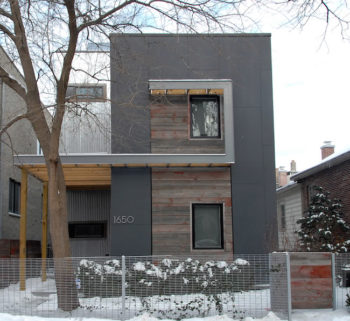
Chicago’s first green prefab house, the C3, was designed by Jeffrey Sommers of Square Root Architecture + Design to ENERGY STAR and Indoor AirPlus standards. Photo courtesy of Square Root Architecture + Design
Purchasing and living in an Indoor AirPlus qualified home comes with a host of benefits, including:
Improved Indoor Air Quality & Healthier Living Spaces
Unsurprisingly, improved indoor air quality and a healthier interior environment are the main benefits of living in an Indoor AirPlus qualified home. These benefits come as a result of specifying low-emitting materials, implementing effective pollutant control measures, preventing pest infestations, installing high-efficiency air filters, and mitigating radon should it be present.
Greater Energy Efficiency
Though the latest version of the base-level Indoor AirPlus program no longer requires homes to earn ENERGY STAR certification, homes designed to Indoor AirPlus standards typically still achieve greater energy efficiency than homes built to standard code requirements thanks to their use of superior air-sealing measures, improved pipe/duct insulation, et cetera.
Homes that have earned the Indoor AirPlus Gold label are even more efficient, as ENERGY STAR certification is still a requirement for qualification. Projects that bear the ENERGY STAR label are at least 10% more energy efficient than homes built to code and achieve a 20% improvement on average.
Increased Comfort
Because Indoor AirPlus emphasizes the importance of installing properly-sized and engineered HVAC systems, homes bearing this distinction are better equipped to effectively—and comfortably—heat, cool, and ventilate their interiors. The energy efficient upgrades and extensive air-sealing measures employed in Indoor AirPlus qualified homes also help to reduce unwanted air infiltration and thermal heat transfer, ultimately making them more comfortable spaces to live in.



